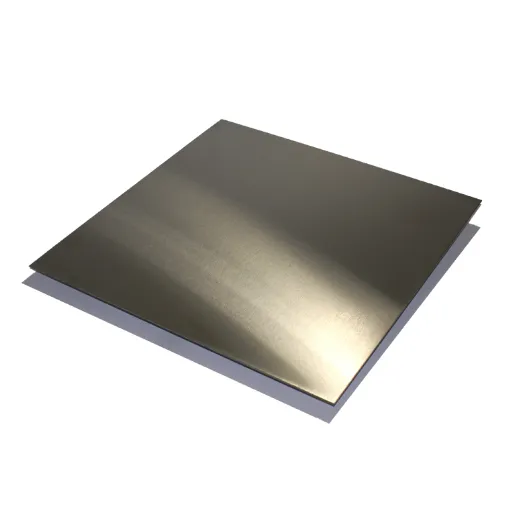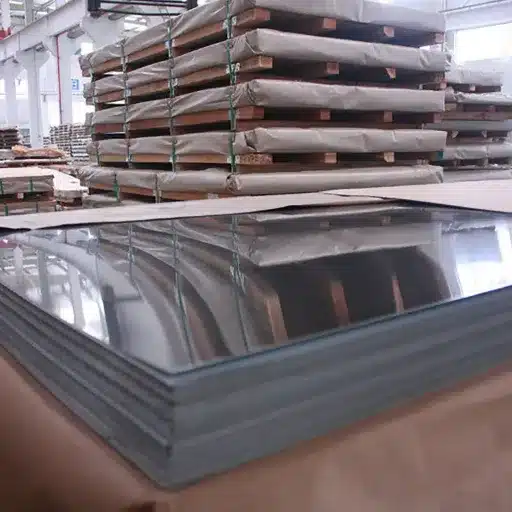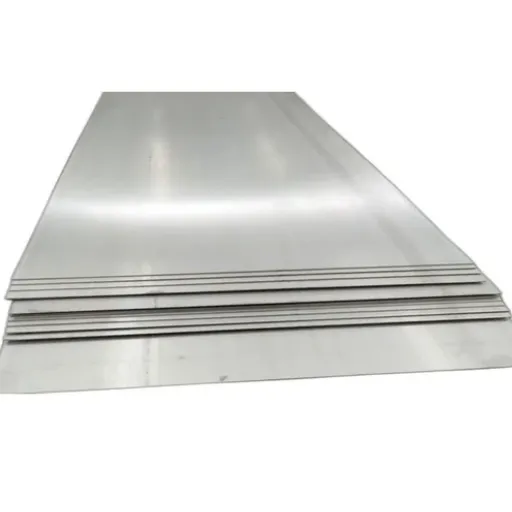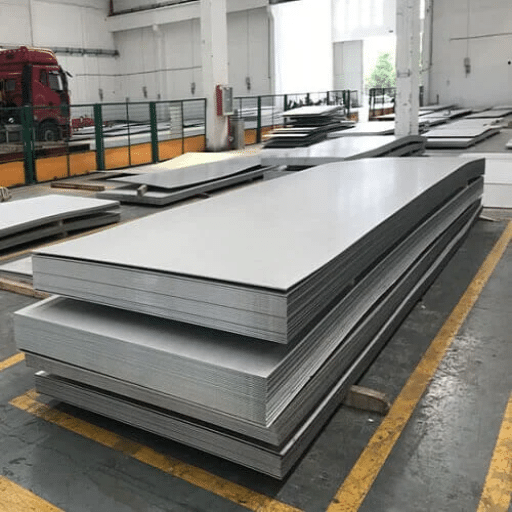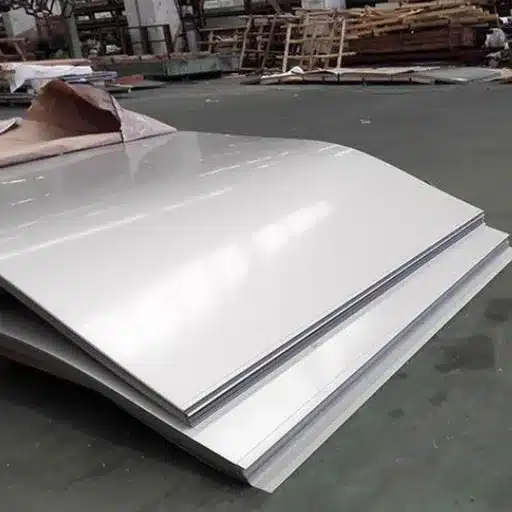Having an essential awareness of the distinctions between a plate and a sheet when it comes to dealing with stainless steel continues to be imperative as each type of steel serves a different purpose. It is worth noting, however, that despite the two types of stainless steel being made up of one strong alloy that is resistant to rust and abrasion, there is more to them than just the difference in thickness. Appreciating the differences is important in many fields, starting from building and production to plane and car building. Our paper explores the principal distinctions displayed between stainless steel plates and stainless steel sheets. The scope of the study also entails the description of physical aspects like the dimensions, the properties of steel and its application within various industries. This guide is for all the professionals considering the aesthetically pleasing features of their projects and the metallurgy they enjoy for an issue of personal interest. This written work would be a guide for one to be competent and effective in conducting material selection analysis.
Fundamental Differences Between Stainless Steel Plate and Sheet
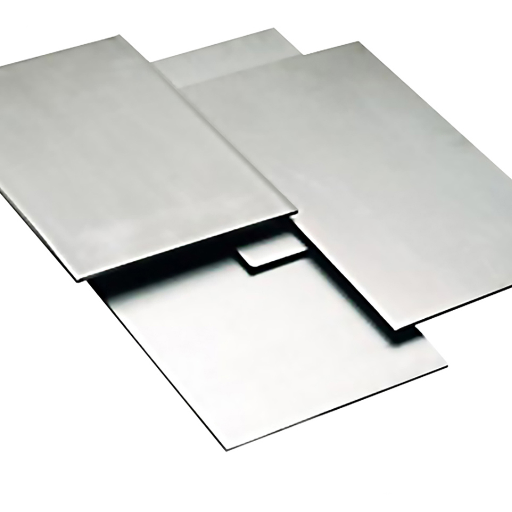
Stainless steel plates and sheets are different primarily because of their thickness and the functions each can perform effectively. A stainless steel plate is generally thicker and starts from standard 0.1875 inches or otherwise known as 3/16 inch. These thicker plates are generally found to be used in heavy-duty applications such as structural components, pressure vessels, and large machine components, as these provide strength and toughness.
Stainless steel sheets, in contrast, are thinner and generally have a thickness of less than 0.1875 inches. Such thin sheets are preferred in precise and lightweight applications like household appliances, body wrappings of a vehicle, and building facings. The usefulness of such sheets is that they are easier to shape, cut and work with without much effort.
The mentioned materials typically consist of stainless steel alloys and come in the form of either plates or sheets. These materials are highly resistant to corrosion and high temperature but show varied resistance depending on the bond of the respective sheets and plates.
Thickness and Dimensions
To assist the buyer in decision making, it is the thickness and size of stainless steel plates and sheets. These parameters are irrelevant in a traditional course, because sizes and thickness are generally described in output standards. Plates are generally considered as stainless steel sheets with a thickness greater than 6mm, while the sheet is normally in between 0.5mm and 6mm in thickness. Plates and Sheets can have different sizes in terms of width and length depending on the manufacturer and its purpose, where usually the supply of the sheets is in a roll form for easy handling or for a fixed size for use in the structure of the sections.
The developments in manufacturing have allowed for the tightness of tolerances to within acceptable levels which enhances the repeatability of the system. An example is the improved rolling process, which enables annealing followed by rolling, which can produce very thin and flexible sheets of uniform dimensions. The provision of precision is essential to sectors such as aerospace, the manufacture of medical devices, and electronics, where disparities in the thickness of the layers may affect the operation. Such standards, along with specifications, provide a common benchmark for the purchase of materials in different industries.
Structural Properties and Strength
Modern materials like steel show promise in enhancing the strength-to-weight ratio, which has shown gradual improvement over the years following advances in modern manufacturing and processing techniques. Mechanical properties like tensile strength, yield strength, and modulus of elasticity functionally meet the design challenges in the civil; automotive and aerospace sectors separately. In this regard, high-performance materials with tensile strengths above 1000 MPa can be used in the required applications while ensuring weight limitations are not exceeded. In the case of composite materials, such as carbon fiber-reinforced polymers, these materials, despite being lightweight, are highly rigid. In some aspects, they are even stiffer than traditional metals. These materials are often subjected to intensive finite element analysis (FEA) in order to predict stress distributions and performance in a practical environment and, in this way, ensure structural soundness. In an environment that is overcast with such advances in material science, strength and integrity in structures find new definitions in design and the inceptional stage of machines and equipment.
Applications Across Various Industries
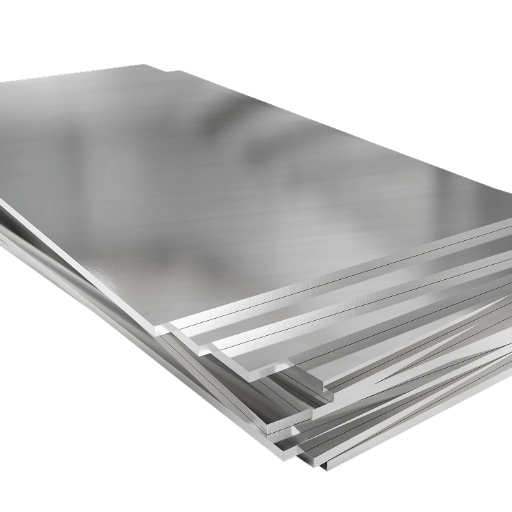
Technological advances have been made in the processing of composite materials such as fiber-reinforced polymers, and, as a result, they have seen widespread use in various fields due to their excellent strength-to-weight ratio, resistance to corrosion, and flexibility for designs.
- Aerospace: This usage helps in reducing the weight and hence the fuel consumption of structures which is beneficial in aircraft structures and in particular, fuselage, wings, and interior outfitting.
- Automotive: The use of such materials reduces the weight of the vehicle and increases road safety by providing lightweight materials, particularly frames, paneling, and impact elements.
- Construction: Composites are used in the construction of long-lasting and weather-resistant structures like bridges, seismic structures, and prefabrications.
- Renewable Energy: The wind turbine blades, among other components, are best produced using composites because they possess excellent stiffness and fight off fatigue for longer times.
- Sports Equipment: Yet another field, the manufacture of sporting goods, incorporates composites without which it becomes impossible to achieve performance and durability worthy of today’s competitive sports.
Construction and Architecture
Evolutionary developments in various components in the fields of construction and architecture has seen them incorporate materials that add strength to the building, reduce the weight, and also enhance the overall design. In particular, such enhanced materials as fiber reinforced polymers more often than not the fiberglass and reinforced carbon, have found their way into infrastructure sectors such as bridges, claddings, and external prestressed systems because of their invaluable quality of being both strong and lightweight with almost zero degradation while under certain atmospheric conditions. For example, high-strength-to-weight carbon-fibre composites are often utilized in the design of load-bearing structures owing to their potential in bearing significant loads yet having a low structural mass, which is beneficial in the quest for sustainable construction practices of the modern era.
What is more, composites fared particularly well regarding the corrosion issue which gives a high appeal of such materials for use of components in such aggressive places as coastal or industrial buildings. The current trends also focus on the growth of composites within prefab and modular buildings. A prefabricated composite panel system, which is factory-produced and very quick in the site assembly, remains the cheapest and most preferred way to deal with projects, cutting down on the number of workers and saving on time as well as enforcing the structure. Some argue that the use of composite materials in structures also helps to reduce maintenance costs and discourages detriments as it helps in achieving a low-carbon emissions policy by replacing materials such as steel and concrete, among others, with composite materials.
Automotive Industry Uses
Because of their superior mechanical properties, corrosion resistance, and the ability to allow for more intricate designs than conventional materials such as steel and aluminium, composites have been warmly received by the automotive industry. Especially light vehicles, which require lightness and speed, are frequently constructed using carbon fiber reinforced plastics (CFRPs). The research made by the National Institute of Standards and Technology estimated that increased employment of composites in vehicle construction could cut back up to half of the weight of the vehicle and correspondingly lower fuel consumption and GHG emissions.
After high-performance cars, composites are being transferred into commonly produced vehicles, including but not limited to exterior panels, interior parts, and battery casings for most of the electric vehicles. Thanks to their thermal isolation, composites prove excellent for heat management of very tightly packed battery modules. Additionally, the production of lightweight components, such as composites, has become more accessible due to advancements in manufacturing processes, including resin transfer moulding (RTM), which can be incorporated into various vehicle designs at lower prices. Such a transformation not only serves the public’s need for sustainable transportation, but it also complies with strict global emission standards without significantly affecting the operation of the automobiles themselves.
Aerospace and Power Generation Applications
The adoption of advanced composite materials in aircraft manufacturing has enabled the creation of structures that are lighter, stronger, and more energy-efficient than those constructed from titanium in the past. For example, the majority of Boeing 787 Dreamliner aircraft currently in commercial use are made from carbon fiber-reinforced polymers. These composites help reduce weight, which in turn translates into reduced consumption of fuels and a decrease in emissions. Additionally, the composites do not fatigue and are not affected by corrosion during the component’s service life, which in the automotive industry reduces operational costs and extends the component’s lifespan.
Benefits of Using Stainless Steel Materials
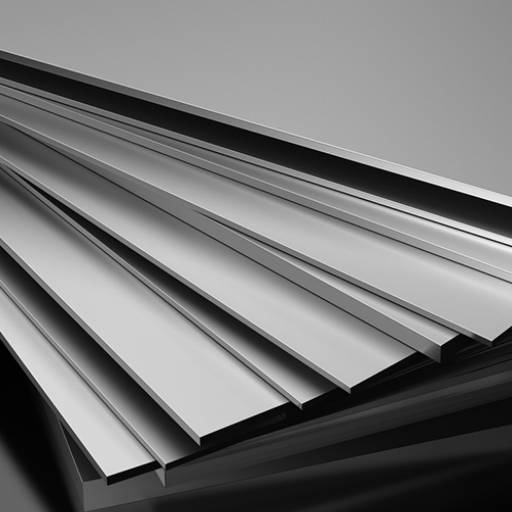
One of the best and widest applications of the use of stainless steel is the range of huge advantages it brings to the table:
- Corrosion Resistance: Stainless Steel’s quite low extensibility has resisted corrosion in different areas to a great extent, having protective proofing against liquids, aggressive gases, salts, and temperature, which promotes its durability in the long term.
- Durability: The salt has no rue against it for all bearing purposes. However, high mechanical strength is meant to enable resistance to wear, e.g., temperature, and impact.
- Low Maintenance: Stainless steel is renowned for its less time and effort for optimization/ maintenance, which is thanks to the protective effect provided by the oxygen-rich oxide of the passive film, and does not suffer from the need for overhauls or defense coatings.
- Hygiene: Because there are no cracks and grind particles, stainless steel is ideal for application in clean areas such as the food and health care industries.
- Sustainability: The reason behind its rather high market price is that stainless steel can be recycled 100% while still offering a high corrosion resistance, making this technology both economically and environmentally sustainable.
Since these virtues make stainless steel a renewable and practical material in industrial and construction sectors, it underpins why it is backed in manufacturing processes.
Durability and Longevity
Possessing a robust and resistant built, stainless steel is a long-lasting material, which is attributable to its corrosion-resistant property that is a direct factor of the metal’s unique composition and the favorable factor of different climatic conditions. The high level of protectiveness of corrosive resistance with the grade which means that it can be installed in conditions which will bring about moisture, contamination and high temperatures without fear of the material breaking down. Studies support the fact that even stainless steel buildings and equipment can last for years with a minimum level of care, which reduces cost and resources in the future. Furthermore, it was considerably reinforced with modern alloying techniques, which further swept the advantages in strength and adaptability making it possible to use in the most demanding applications like marine and chemical facilities as well as buildings. Such properties enable stainless steel to be characterized as a high-performing material with a long life expectancy.
Corrosion Resistance in Various Environments
The major exhibit of stainless steel’s high corrosion resistance across a wide range of environments lies in its ability to form a passive layer of chromium oxide in said environment. This specific layer is quite robust and virtually prevents the detrimental oxidation, as well as degradation in general, of the material in even extreme environmental conditions. Take, for example, in fresh water conditions, grades such as 304 stainless steels exhibit excellent performance at low levels of chlorides. On the other hand, in more severe industrial settings, molybdenum-rich grades like 316 stainless steel are considered the best owing to both more resistance to pitting and crevice corrosion.
Numerous investigations indubitably suggest that stainless steel does not give in its structural integrity even when the pH value and temperature are not compatible. For instance, the polymorphs of monophase (ferritic or austenitic) stainless steel are not ideal to stand harsh environments because of the character of this micro alloy in terms of stress corrosion, wear, and erosion resistance of these materials. Moreover, the utilization of stainless steel, including duplex grades, enabled the efficient execution of many food processing plants and chemical industries where both issues of mechanical strength and strong corrosion resistance are of concern. Also exciting is the colorless improvement of steel, or more specifically, the passivation and electropolishing techniques, which also protect or treat stainless steel, which is beneficial in very tough working conditions.
Aesthetic Appeal and Versatility
Indeed, stainless steel is not only known for its impressive mechanical and physical properties. The ultra–modern look makes stainless steel the ultimate choice for buildings, fixtures, applications, and domestic goods in ornamental applications. Even when subjected to high traffic or harsh conditions, the lustrous and glittering properties of the stainless steel are not lost. The varied finishes that range from a mirror finish to a matt finish enable stainless steel to achieve any possible customization. Stainless steel is also attractive as it provides for self-sustainability and low maintenance, which is an increasingly important goal in material use, especially in industrial settings. Each feature turns stainless steel into a solution whenever functionality and refined style are required in products.
Choosing the Right Stainless Steel Option
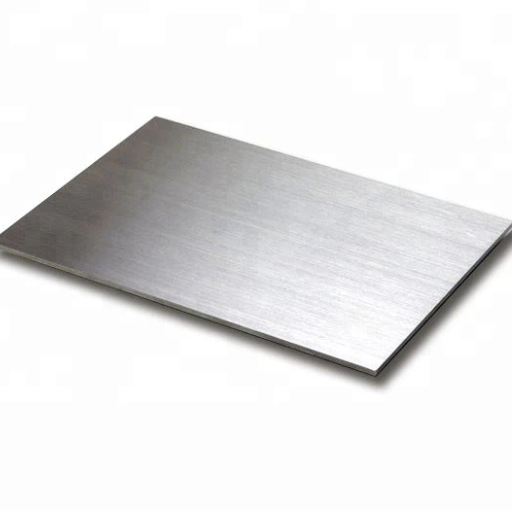
When choosing the appropriate stainless steel option, it is essential to evaluate the specific requirements of your application. Key factors to assess include:
- Corrosion Resistance
The service factors of the specific grade are very crucial. For supply chain stainless steel welded pipes, applications or installations that come with the presence of moisture, salt, or chemicals for 316 grade, they have shown excellent resistance as compared to grade 304 related to similar conditions.
- Strength and Durability
The service levels of stress that component 316 is capable of supporting are high. For items that are to be kept or reversed by toroidal pressure, there is no better material than the pressurized equipment grade super duplex stainless steel.
- Temperature Resistance
Another important aspect is the service temperature range for the steel structural system adopted. The high temperature resistant steels like 310 or 321 do not give up under the influence of heat load.
- Aesthetic Requirements
A given finish can then range from the polished mirror surfaces to the matte ones without performance lowering. The direct use of a material or a finish is mainly selected by the need in the given range of cosmetic requirements, coupled with the functional requirements of the structure to be constructed.
- Budget Constraints
Weigh the costs against the expected performance. For areas that are not subject to corrosion, the use of the readily available, lower-priced 430 stainless steel may be appropriate.
Environmental Conditions and Suitability
In their applications, the choice of stainless steel will largely depend on the environment. Stainless steel can be used in highly corrosive environments, such as marine applications or in chemical plants, where corrosive compounds are present, as it features advanced corrosion-resistant grades, like 316 or duplex grades, which contain high levels of molybdenum and chromium. Conversely, in moderate environments such as internal indoor environments or dry areas, ferritic type stainless steels such as 409 will be more favorable due to the low cost and high performance.
Temperature change and exposure to specific chemicals also play a role in the material choice. In areas with excessive temperatures, the category of the alloy that is most used is high temperature resistance alloys, which have the ability to keep their mechanical and resistance behaviors, such as their 310 variant. Furthermore, since chlorides are generally present in marine environments, certain stainless steels possess the necessary characteristics to resist pitting and crevice corrosion. These grades are sensitive to chlorides and can degrade over time in prolonged exposure to chlorides. Once these environmental constraints are well understood, one can be confident that the selected material is viable and will meet the expected standards, as proper care will be taken when using it in the future.
Custom Fabrication Considerations
Since manufacturing and designing parts intended for specialized usage requires much consideration, there are many critical aspects needed to ensure they operate efficiently and last longer. To being with, it’s essential to use precise manufacturing techniques such as lazing and water-jet when carrying out fabrication processes since this is the only way that can guarantee that all the dimensions will be within the required limits and that there will be minimal loss of material during the process. Services like T & MIG Welding are equally important as they create a welded combination of widely non-ferritic stainless steel and alloys, which exhibit saturation properties that are conducive to various construction projects. Furthermore, operations that follow fabrication, including several operations like normalizing and pickling processes, are required to rectify any flaws, especially in the case of stainless steels, as other heat treatment processes aren’t feasible.
Moreover, it is necessary to consider thermal expansion and contraction that are present due to the temperature changes a particular machine may undergo during operation. As a result of this, the incorporation of expansion joint/s or consideration of the size of movement in the design is to prevent deformation and stress buildup in the structure. By working with advanced fabrication techniques in association with a detailed understanding of material behavior, manufacturers won’t have challenges producing components that can perform effectively over a reasonable period of time and satisfy market needs.
Comparison with Other Metals
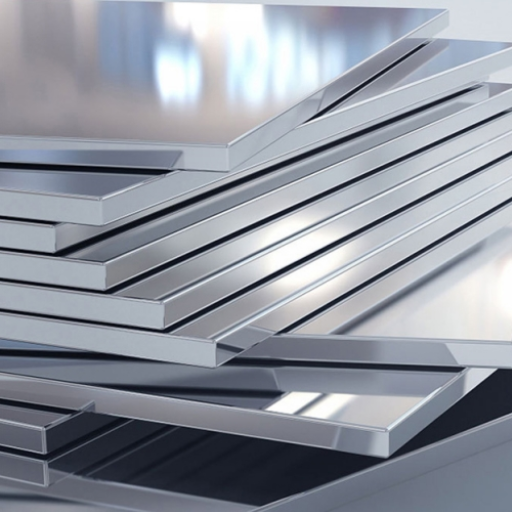
When compared with metals like aluminum, steel, and titanium, it can be noted that the material has very specific properties. The material is not like aluminum, which, although lightweight, means it is not as strong as required in many applications where high strength is absolutely essential. Within its weight/engineering characteristics, this material is able to support high stress and it is deformation-free, unlike the chemical properties of aluminum. Another alternative is steel, which has reduced corrosion and thermal protective capacity, hence lower requirements of repair in regions with large variations in temperature. Titanium is relatively less favored as an option due to its cost and availability, as it has significant strength-to-weight advantages just like the material under discussion. Such strategic benefits are highly effective in mitigating stress within a system and suggest the material’s suitability for heavier weight segments with moderate life expectations.
Stainless Steel vs. Carbon Steel vs. Aluminum
|
Parameter |
Stainless Steel |
Carbon Steel |
Aluminum |
|---|---|---|---|
|
Corrosion Resistance |
High, resists rust and staining |
Low, prone to rust |
Moderate to high, depends on alloy |
|
Weight |
Heavy |
Heavier than aluminum |
Lightweight |
|
Strength |
High tensile strength |
Very strong |
Moderate strength |
|
Thermal Conductivity |
Low, poor heat conductor |
Moderate |
High, excellent thermal conductor |
|
Electrical Conductivity |
Low |
Low |
High |
|
Cost |
Expensive |
Affordable |
Moderately priced |
|
Weldability |
Challenging for certain grades |
Easier than stainless steel |
Very easy |
|
Durability |
Very durable |
Moderate durability |
Durable but softer |
|
Maintenance |
Low maintenance |
Requires regular maintenance |
Minimal, resists corrosion |
|
Workability |
Hard to shape |
Harder to form |
Highly malleable and formable |
|
Recycling |
Highly recyclable |
Highly recyclable |
Easily recycled |
|
Heat Resistance |
Excellent temperature resistance |
Moderate resistance |
Poor resistance to high heat |
|
Surface Appearance |
Polished or brushed finish |
Industrial aesthetic |
Smooth, anodizable finish |
|
Applications |
Food grade, construction, medical |
Construction, tools, heavy machinery |
Aerospace, packaging, transportation |
Why Choose Stainless Steel Over Other Materials?
In addition, incredibly convenient stainless steel is also because of its strength-to-weight ratios and durability, which is often exhibited. This allows it to take exceptionally high mechanical loads in spite of being extremely lightweight at the same time, which is why it is favored in sectors like building, vehicles, or planes. It is even tolerant to high temperatures, as on many occasions, it is possible to subject a stainless steel body to very high temperatures without affecting its elasticity.
Reference Sources
1. Stainless Steel in Construction: A Review of Research, Applications, Challenges, and Opportunities
- Stainless steel’s unique properties, such as corrosion resistance and durability, make it ideal for construction.
- Advances in duplex stainless steels and surface finishes have expanded its applications.
2. Experimental and Numerical Studies of Stainless Steel Angle-to-Plate Connections
- Tension tests on 16 stainless steel angle-to-plate connections revealed strain distribution and failure modes.
- Finite Element (FE) models were developed and validated, showing inaccuracies in existing design codes.
3. Use of Stainless Steels in the Industry: Recent and Future Developments
- Lean duplex and superaustenitic stainless steels are increasingly used in water production, chemical transport, and storage.
- New materials like Mo-free lean duplex UR2202 offer cost-effective alternatives to traditional grades.
Frequently Asked Questions (FAQs)
Q: What is the difference between stainless steel sheet and stainless steel plate?
A: The main difference between stainless steel sheet and stainless steel plate lies in their thickness. Stainless steel sheets are typically thinner, usually under ¼ inch, while stainless steel plates are thicker and used for more heavy-duty applications. Both products are available in various grades such as 304 and 316, which offer good corrosion resistance. Stainless steel sheets are often used in residential applications like kitchen appliances and backsplashes, while plates are favored for industrial uses. When buying these products, consider the thickness and intended use to ensure you get the right material for your needs.
Q: What are the common applications of 304 stainless steel sheet and plate?
A: 304 stainless steel sheet and plate are widely used due to their excellent corrosion resistance and durability. Common applications include kitchen equipment, hospital equipment, and various metal products in industrial settings. The material is also popular for fabrication in marine hardware and food processing, thanks to its anti-bacterial properties. When selecting 304 stainless steel, consider finishes like 2B or brushed for aesthetic purposes. Overall, its versatility makes it a preferred choice in a variety of sectors.
Q: How can I buy stainless steel products online?
A: You can buy stainless steel products online through numerous suppliers such as MetalsDepot®. They offer a wide selection of stainless steel plates and sheets cut to size. When shopping online, be sure to check for available stock sizes, such as 4ft x 8ft or 2ft x 2ft, to meet your project’s requirements. It’s also important to review the specifications, such as the grade (304 or 316) and finish (like 2B or brushed). Fast delivery options are often available, ensuring you receive your materials promptly.
Q: What factors should I consider when selecting stainless steel sheet metal for fabrication?
A: When selecting stainless steel sheet metal for fabrication, consider the grade, thickness, and finish. For example, 304 stainless steel is commonly used for its good corrosion resistance, while 316 stainless steel offers enhanced durability in corrosive environments. The thickness will determine the strength and usability of the sheet in various applications, such as kitchen appliances or industrial settings. Additionally, choosing the right finish, such as a 2B or brushed finish, can influence both appearance and functionality. Don’t forget to account for the specific requirements of your project, including any necessary custom fabrication.
Q: What is the importance of good corrosion resistance in stainless steel plates?
A: Good corrosion resistance is crucial in stainless steel plates, especially for applications in industrial atmospheres and marine environments. Plates that resist corrosion maintain their integrity over time, reducing maintenance costs and extending service life. For instance, using 316 stainless steel plates can be particularly beneficial in corrosive conditions thanks to their higher nickel content. On the other hand, 304 stainless steel plates are suitable for less demanding applications. Ultimately, selecting the right material based on corrosion resistance can greatly impact the durability and performance of your project.

